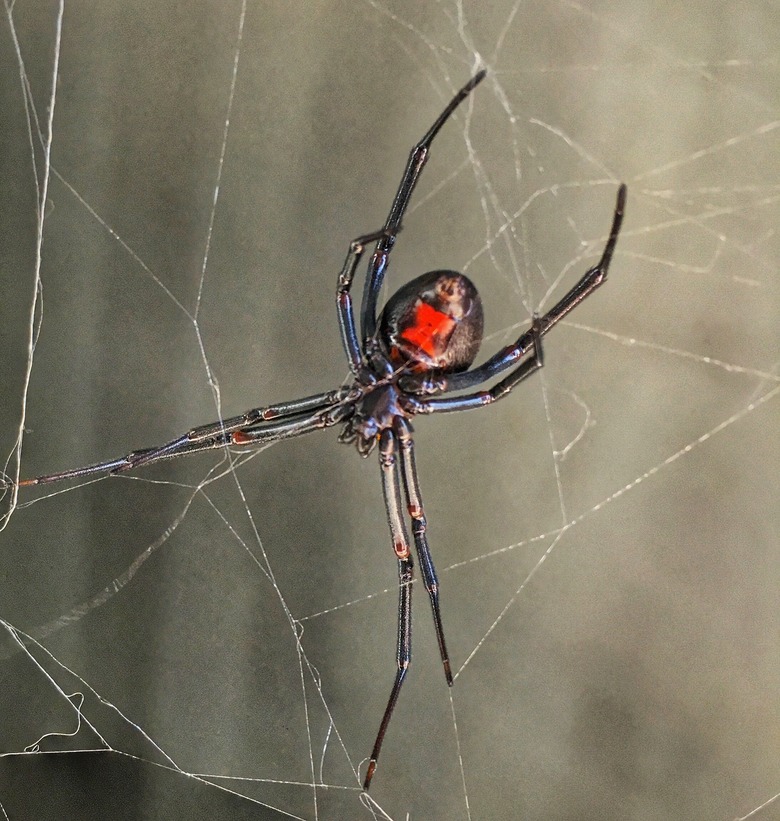What Should I Do If My Dog Ate A Spider?
Big, hairy wolf spiders, stocky, little, jumping spiders, crab spiders, cobweb spiders, cellar spiders, and sac spiders: our eight-legged animal friends are a creepy, crawly bunch that strike terror in many a brave person's heart.
Why these relatively small creatures cause otherwise sane adult human beings to scream and recoil in horror is no mystery, especially since many of the larger ones can inflict bites that leave a nasty welt. So unless you're a bugologist (technically known as an entomologist) or are fascinated with bugs in general, spiders are indeed an acquired taste—literally, when it comes to some dogs.
Yes, many dogs have mastered the art of eating bugs and spiders, along with a lot of other distasteful and gross things—often with no ill effects. If this sounds like your dog, you're not alone, but you should know what to do if your dog eats a spider, because the outcome of dining on a spider all depends on what species of spider he ate. If your dog eats one of the "dangerous three" —black widow, hobo, or brown recluse spider—seek veterinary care immediately.
What kind of spider did your dog eat?
What kind of spider did your dog eat?
From innocuous house spiders to poisonous brown recluses, black widows, and hobo spiders, there's a vast array of arachnid species throughout the United States—and dozens of them may be living in your home at any given time.
Linda Cole at Canidae says that while munching on some spiders produces no adverse reactions, playing with or eating poisonous species of spiders like brown recluse, hobos, or black widows could have serious consequences. These consequences could include spider bites inside the sensitive tissues of the mouth and the tongue, and severe allergic reactions to the highly poisonous venom, which could cause serious injury or death.
Black widow, hobo, and brown recluse spiders
The U.S. is home to about 2,500 species of spiders, says Entomology at the University of Kentucky. This is an incredibly diverse range of arachnids, but most of them are not dangerous for dogs, either by bite or ingestion. However, you don't want your dog to tangle with any of the three species of spiders living in the U.S. that are highly venomous to both your dogs and you: the black widow, brown recluse, and hobo spider, also known as the aggressive house spider or funnel weaver.
Some of the symptoms of poisonous spider bites, says Dr. Karen Becker, DVM, at Mercola Healthy Pets, are: early marked paralysis, difficulty breathing, restlessness, loss of coordination and ability to stand, muscle tremors, and cramping. By extension, if your dog eats one one of these toxic spiders, you'll need to watch out for the same symptoms.
Black widow spiders: Three species of widow spiders are found in every state except Alaska. These species include the Northern black widow, which is found in northernmost areas of the U.S. and southeast Canada, the Southern black widow, found in the southeast U.S., and the Western black widow, found in the western regions of the U.S.
Black widows measure about 3/4 inch in diameter. with the female of the species shiny black with a red or orange signature hour-glass marking on the bottom of her abdomen; her venom can be deadly. The males are brown and lack the hour-glass marking and along with juvenile widows are virtually harmless. If your dog encounters a female black widow and is bitten, it could be fatal if anti-venom treatment isn't given quickly enough, explains Dr. Becker. The widow's venom is a potent neurotoxin that triggers a massive release of acetylcholine and norepinephrine in a dog's body, causing muscle spasms and paralysis.
In the case of your dog getting his mouth anywhere near a black widow or actually chewing it up and swallowing it, you can imagine that in the process he's quite likely to be bitten. You'll need to act fast and get your dog to your vet or an emergency animal hospital immediately where he can be given anti-venom.
Brown recluse spiders: These dangerous brown spiders have a violin-shaped pattern on the back of the front body segment. Unlike most spiders they have only six eyes instead of eight, and long, thick legs. Brown recluse bites are necrotizing, which means the bite wound will ulcerate and cause the death of surrounding soft tissue. This creates a very slow-to-heal wound increasing the risk of secondary infections such as gangrene.
In the case of ingesting the spider, the venom enters into the bloodstream and/or internal organs. The venom has the potential to cause the destruction of red blood cells, kidney failure, coagulation disruption, and even death. Whether a brown recluse spider bites your dog or he eats it, seek veterinary care immediately.
Hobo spider bites are initially painless but blisters develop over 35 hours, rupturing and forming craters with necrotic arachnidism or tissue death and sloughing for up to 40 days, a lingering slow-to-heal wound, much like the brown recluse bite. If your dog eats a hobo spider, it can cause toxicosis, and, of course, it's likely to bite inside the mouth or on the tongue before swallowing so there are two issues of cconcern. These large, brown poisonous spiders with a V shape on their abdomen with the tip of the V pointing towards the head were originally imported from Europe in the 1920s and are very common in the Pacific Northwest. Whether a hobo spider bites your dog or he eats it, seek veterinary care immediately.
Conclusion
Conclusion
Seek veterinary treatment immediately if you suspect your dog has eaten one of the three highly venomous spiders in the U.S: black widow, brown recluse, or hobo spiders. Not only will ingestion of these spiders cause toxicosis, but also the bites on the way down pose a serious threat to your dog's health.
Otherwise, every other spider species, big or small and particularly large spiders, have venom, but according to veterinarian Dr. Bruce, the average spider's venom is diluted by the dog's stomach acid and the average spider is digested without any problem. That said, it's vital to keep a watchful eye for any of the above symptoms of allergic reactions and contact your vet if in doubt about what kind of spider your dog ate, how to interpret any symptoms, and how long you should be monitoring her.
Always check with your veterinarian before changing your pet's diet, medication, or physical activity routines. This information is not a substitute for a vet's opinion.
References
- Canidae:Is It Safe for Dogs to Eat Insects
- Mercola Healthy Pets: Black Widow Spider Bite Can Kill Pets If You Don't Act Fast
- USA Spiders: Brown Recluse
- USA Spiders: Black Widow
- Daily Dog Discoveries: My Dog Ate a Spider
- Health Tool: Hobo Spider Bite
- Entomology at the University of Kentucky: Common Spiders Found Around Homes and Buildings
- Atlantic Veterinary Hospital: The Hobo Spider – He Ain't No Charlotte



